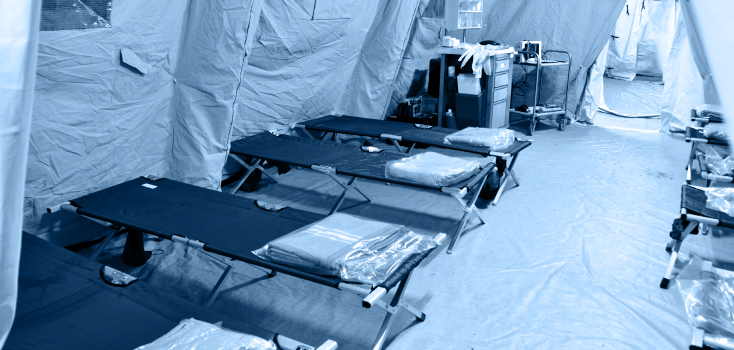
iProcureSecurity – Webinars, outcomes and insights – September
Seeking to cover R&D related gaps in the EMS sectors and discuss relevant outcomes for the preparation on the upcoming European-wide Pre-Commercial (PCP) project a series of interviews and workshops were conducted, providing a framework for an in-depth discussion with internal as well as external EMS organizations and stakeholders. In the following section, two of them are briefly described:
23.06.2020 – Triage And Treatment Of Patients In Events Of Emergency Link
This webinar was conducted seeking to present information on how Emergency Medical Services (EMS) organizations across Europe perform triage and treat patients at major emergency incidents. Presenters in this virtual event were EMS organisations from Cyprus, Malta, Finland and the United Kingdom.
Based on the analysed findings one can conclude that small EMS organisation from the scope of “Eira medical center and hospital” in Helsinki perform triage predominantly on a rather occasional basis such as sports events and mass gatherings. The communication between the different members of the staff is facilitated through technological means such as walkie-talkies, ensuring that all parties involved in the management of the emergency event are informed on the current situation. The management of mass casualties with numerous emergency patients is taken care of by the city and EMS organisations responding to and responsible for 112 calls. Other EMS organisations perform triage applying both START (Simple Triage and Rapid Treatment) and ESI (Emergency Severity Index), thus achieving deeper categorization of the emergency patients and better allocation of the available resources. Bigger EMS organisations from the scope of James Cook University Hospital in complex structures and procedural execution of triage, having a predetermined process seeking to support quick decision making in mass casualty events. As such the triage is applied to direct emergency patients, depending on their physical state, to hospitals specialised on handling a particular type of injuries. The triage process consists of three main steps ensuring the coherency of the information and the dynamic adaptability of the EMS system to the changing situation, including the health status of the emergency patient and safety of the EMS practitioners.
With regard to related challenges, one can state that in the case of mass casualty’s EMS organizations experience certain difficulties in switching from one triage system to another, due to a lack of experience and evidence-based training. Another factor affecting the way EMS practitioners manage emergency situations is the PPE, which in some case does not fully suit the methods applied by the pre-hospital personnel to provide emergency medical care.
To tackle these and other related challenges from the field, the presenters suggested the implementation of sophisticated AI algorithms to explore ways of learning from previous emergency situations and guide the accident management. Digital innovation needs, to be additionally applied to allocate better resources in the EMS system, track the patients and make sure that they arrive at the right place in the shortest time possible.
30.06.2020 – Innovative EMS Trainings Link
To provide an overview on how EMS organizations across Europe build up and maintain the skills of the EMS personnel and shed some light on innovations, which can be applied to tackle related challenges and gaps, the iProcureSecurity consortium organized another webinar, inviting presenters from three organizations with experience and knowledge in conducting training in the field: Copenhagen Academy for Medical Education and Simulation, Italian Resuscitation Council and the Academic Medical Center in Amsterdam.
During the discussion, two main gaps of importunate to the provision of high-quality training to EMS practioners, were highlighted by the participants. The first concerns the teaching of skills in realistic scenarios and in realistic settings with no real patients involved. The second relates to information overload, representing a barrier which prevents doctors from using web resources such as videos, podcasts, blogs etc. Based on the insights provided by the webinar participants, it can be claimed that innovation technologies such as augmented and virtual reality offer various possibilities for simulating trainings for EMS practitioners covering many sensory stimuli (visual, auditory and haptic). By integrating virtual objects into virtual reality (VR) a variety of interaction options can be created, thus enabling the participants to acquire professional skills in a concrete emergency scenario.
Further virtual events took place during the second project period to provide important insights for the upcoming PCP action as well as for the EMS system as a whole. An exclusive list with the recorded events and summaries can be found here: https://www.iprocuresecurity.eu/workshops/
To learn more about the ongoing work of iProcureSecurty consortium simply join our EMS Network and become a main driver of innovation in the field of Emergency Medical Services!

